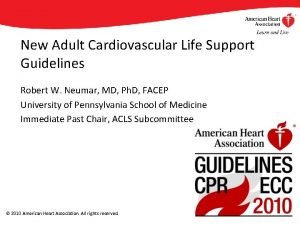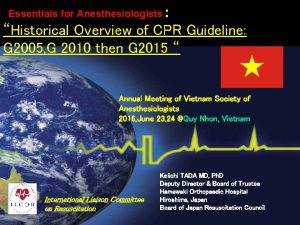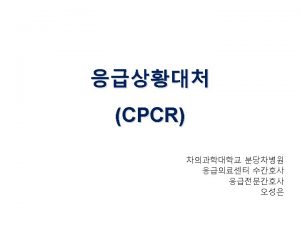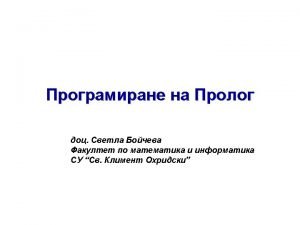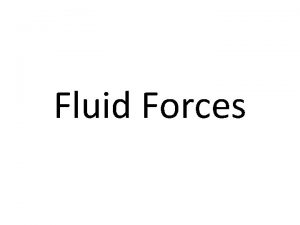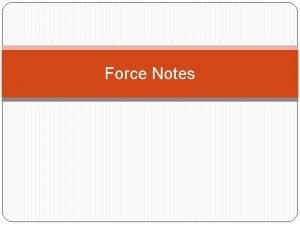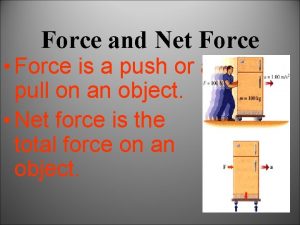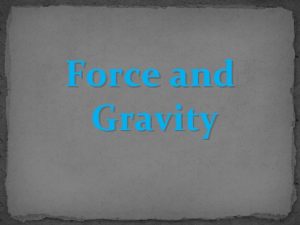Introduction to Force Defining Force Force Any Push











- Slides: 11

Introduction to Force

Defining Force • Force: Any Push or Pull - Any interaction between two objects • Force is a vector quantity

Inertia • Inertia: An object’s tendency to remain in motion at constant speed in a straight line or to remain in a state of rest. I mass

Newton’s First Law of Motion • Newton’s First Law of Motion: An object has a natural tendency to remain in motion at a constant speed in a straight line or to remain at rest unless acted upon by a net force.

Net Force • Net Force: The sum of all forces acting on an object. – FNet = F – FNet = zero, then the object must have zero acceleration (i. e. at rest, moving at constant velocity) – FNet zero, Object must be accelerating

Force Diagram • Force Diagram: A diagram that displays all the forces acting on a single object. (also known as a free-body diagram) – Represent the object by a single point – Draw force vectors such that they originate from the point

Types of Forces – Gravitational Force: A force of attraction between any two masses. Fg • Even though this force acts between all objects with mass, it is commonly observed between planets and terrestrial objects.

Types of Forces • Normal Force: A contact force that acts at a right angle to the surfaces of two objects in contact. FN (Normal right angle) – Contact forces are attributed to the electromagnetic force between charged particles at the microscopic level.

Types of Force • Frictional Force: A contact force that acts parallel to the surfaces of two objects in contact, so as to oppose the relative motion of the two surfaces/objects. – Types of Friction • Static- Opposes the motion of two surfaces stationary relative to each other. Fs • Kinetic- Opposes the motion of two surfaces moving relative to each other. Fk

Types of Force • Tension Force: A contact force applied along the length of a narrow object. (ex. string, rope, cable, rod, arm, etc. ) FT • The tension force is the same at any point along the continuous length of the object. – The tension force acts in both directions along its length.

Types of Forces • Air Resistance: The contact force between air molecules and objects in motion relative to each other. FR – FR α v
 Defining non defining relative clauses
Defining non defining relative clauses Relative clauses defining and non defining
Relative clauses defining and non defining Prepositions in relative clauses
Prepositions in relative clauses Defining relative clause meaning in telugu
Defining relative clause meaning in telugu Pronounlar
Pronounlar Relative clause definition
Relative clause definition Push hard push fast fully recoil
Push hard push fast fully recoil Push hard push fast fully recoil
Push hard push fast fully recoil Push hard push fast fully recoil
Push hard push fast fully recoil Push hard push fast fully recoil
Push hard push fast fully recoil Shamiel salie
Shamiel salie Asp medical
Asp medical







